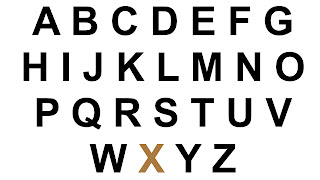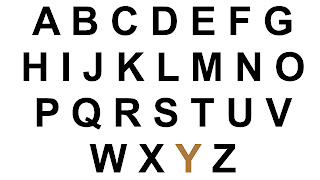https://medicaleducationelearning.blogspot.com/2020/06/medical-education-disrupted-by.html
(above link to conference website)
https://www.slideshare.net/dnrgohps/learning-and-training-for-transfer
https://medicaleducationelearning.blogspot.com/2020/04/iamse-2020-plenary-presentation-medical.html
How do you optimally blend, mix, and combine? analogue/digital, in person/online, physical/virtualfrom Poh-Sun Goh
Role of Instagram (-like Content) in eLearning, eTeaching, Digital Research and Scholarship from Poh-Sun Goh
TeL in MedEd - catch Attention, show Value, to Know, Do and Feel, Start here, EMD case studyfrom Poh-Sun Goh
see above, and more on blogpost below
https://jamanetwork.com/journals/jama/fullarticle/2764138
https://www.weforum.org/agenda/2020/03/3-ways-coronavirus-is-reshaping-education-and-what-changes-might-be-here-to-stay/
https://www.insidehighered.com/digital-learning/article/2020/03/18/most-teaching-going-remote-will-help-or-hurt-online-learning
https://www.nie.edu.sg/teacher-education/useful-resources-for-HBL-WFH-EdCo/education-related-covid-19-articles
https://www.oecd.org/education/Supporting-the-continuation-of-teaching-and-learning-during-the-COVID-19-pandemic.pdf
https://en.unesco.org/news/covid-19-webinar-new-world-teachers-educations-frontline-workers-covid-19-education-webinar-2
https://www.un.org/development/desa/dspd/wp-content/uploads/sites/22/2020/08/sg_policy_brief_covid-19_and_education_august_2020.pdf
https://www.pewresearch.org/internet/2017/05/03/the-future-of-jobs-and-jobs-training/
https://www.businesstimes.com.sg/technology/demand-for-online-doctors-creates-us39b-titan-in-japan
e-Learning for the medical team: the present and future of ERS Learning Resources
Ali Merzouk, Pascal Kurosinski, Konstantinos Kostikas
Breathe Dec 2014, 10 (4) 296-304; DOI: 10.1183/20734735.008814
https://breathe.ersjournals.com/content/10/4/296
Tan, Jennifer & Choo, Suzanne & Kang, Trivina & Liem, Gregory Arief. (2017). Educating for twenty-first century competencies and future-ready learners: research perspectives from Singapore. Journal Asia Pacific Journal of Education. 37. 425-436. 10.1080/02188791.2017.1405475.
https://www.tandfonline.com/doi/full/10.1080/02188791.2017.1405475
https://www.pageuppeople.com/resource/top-11-learning-trends-for-2019/
https://learning.linkedin.com/resources/workplace-learning-report
The Nature of Learning: Using Research to Inspire Practice (OECD report)
https://www.pewresearch.org/internet/2017/05/03/the-future-of-jobs-and-jobs-training/
https://digitalmarketinginstitute.com/blog/how-to-prepare-students-for-the-jobs-of-the-future
‘What are the tools, activities and strategies you have been using that come closer to (re)creating the energy, excitement and ‘buzz’ of face-to-face teaching and learning?’ - Tanya
As an initial reaction ...
VIDEO ... INTERACTIVE
Engaging Students, and Creating a Buzz in the Classroom - Both Physical, and Online
Poh-Sun Goh (6 October 2020 @ 0702am)
Reflecting on my experience as a student, and teacher , one immediate idea comes to mind.
That it is relatively easy when the student is ‘hungry’ for knowledge, to learn, to become well trained and skilled.
These students will learn from, and engage enthusiastically with content and a learning activity involving any medium (text, audio, illustrations, multimedia and video, Virtual, Augmented and Mixed Reality content).
Often an instructor presents the content, and training scenario, and steps aside.
These students will engage in discovery and active self learning, search for more information,
Ask questions, and independently search for answers, by asking peers, their seniors, teachers,
Looking up answers in books, and online; then self-evaluating answers, and practicing skills,
While reflecting on feedback constantly, in order to improve their skills, and deepen knowledge.
We are generally fortunate in health professions education, with our undergraduates, postgraduates, and lifelong learners; who are generally motivated, committed learners, self selected for practice by a motivation to serve their patients, and give back to society.
For less motivated, or disinterested students; often all that is needed is to capture their attention, and show value, either in the physical classroom, or online.
As students, we engage with content, and a learning process when this is clearly seen to be relevant, and useful. Making the learning process fun is a bonus.
To use an analogy, imagine the last time you had to learn something because you ‘Had to’, compared with
‘Wanted to” or because of a ‘Passion and Deep Interest in a Topic’.
As teachers, we can create, and curate (with attribution) content that captures interest, and show value. Design learning activities, and environments, both in physical and virtual online spaces to facilitate self-directed learning, reinforced by interaction with the instructor and peers in group activities, and application of what has been learnt, with feedback, and to promote reflection, and assimilation.
“what and how you are doing to motivate institutions to invest their resources on innovation in technological advancement in clinical education?” - Ada
As an initial reaction ...
see 'Tip' 1 in
Sandars, J., Correia, R., Dankbaar, M., de Jong, P., Goh, P.S., Hege, I., Masters, K., Oh, S.Y, Patel, R., Premkumar, K., Webb, A., Pusic, M. (2020). Twelve tips for rapidly migrating to online learning during the COVID-19 pandemic. MedEdPublish, 9[1], pp 82. Available at
see 'Understanding the Transformation' section in
Goh, P.S, Sandars, J. (2020) 'A vision of the use of technology in medical education after the COVID-19 pandemic', MedEdPublish, 9, [1], 49, https://www.mededpublish.org/manuscripts/2943
- consider also a starting point / thought experiment which is - 'What if an individual teacher, group, or institution had to implement 'eLearning' or Technology Enhanced Learning with no resources? With no budget?
Screenshot below of Q and A to Best Practice Session at Virtual AMEE (on Padlet, a 'free platform')
Use what is 'at hand', 'off the shelf', work with existing tools, and content available and accessible to teachers, and students, in the local learning environment.
'No budget' innovation.
"What are the challenges faced by the students during the pandemic and the e-learning era? What can we educators do to help students overcome these challenges?"
"I would like to focus on the students' perspectives." - Sofie
As an initial reaction ...
Adaptive learning
Interface design
User experience
Know your students, well (as a teacher)
Train the students in Digital literacy and Time management skills
Digital natives are not necessarily expert users of technology to learn. Nor are teachers.
Don’t overload the curriculum. Schedule time to ‘learn’ discussion and to assimilate.
Always apply learning science and best practices in instructional design for online environments
Work with educational technologists and professional instructional designers, and learn at the coal face from them.
Use your domain expertise.
Notice that many of our children’s school Teachers have both University degrees in their area of domain expertise, and also have formal training as educators.
"What are the biggest obstacles to implementing the changes and improvements being advocated in medical education?" - Jason (6 October 2020)
As an initial reaction ...
Ringberg, T., Reihlen, M., & Rydén, P. (2019). The Technology-mindset Interactions: Leading to Incremental, Radical or Revolutionary Innovations. Industrial Marketing Management, 79, 102-113. https://doi.org/10.1016/j.indmarman.2018.06.009
Goh P.S, Sandars J. (2020) 'A vision of the use of technology in medical education after the COVID-19 pandemic', MedEdPublish, 9, [1], 49, https://doi.org/10.15694/mep.2020.000049.1
"Are there successful examples of improving teaching/learning experiences from outside of the world of medical education that ought to be emulated? And are there innovations being introduced in medical education that other industries should pay attention to?" - Jason (6 October 2020)
As an initial reaction ...
There are many, however 'agile learning' comes to mind, in the current environment (to be applied especially in postgraduate, continuing professional development and lifelong learning settings in health professions education) - https://telmeded.blogspot.com/2020/10/agile-learning-in-healthcare.html
(will be elaborating on this progressively on blogpost link above, over the coming weeks)
taking lessons from educating and training future, and current health professionals, and transferring this to other industries
- a relentless focus on patient safety, and deep desire to deliver the highest quality care, at both a technical, and human levels
"They help us out in emergencies, save lives and care for others: In nearly all of the countries surveyed, firefighters and medical professions such as paramedics, doctors and nurses are awarded the best scores." - https://www.nim.org/en/compact/focustopics/worldwide-ranking-trust-professions
Is this 'nature' or 'nurture'? How does candidate selection, training (initial and continuing), professional/team/institutional culture building, norms and processes produce this outcome; and what can other industries learn from this.









No comments:
Post a Comment
Note: only a member of this blog may post a comment.